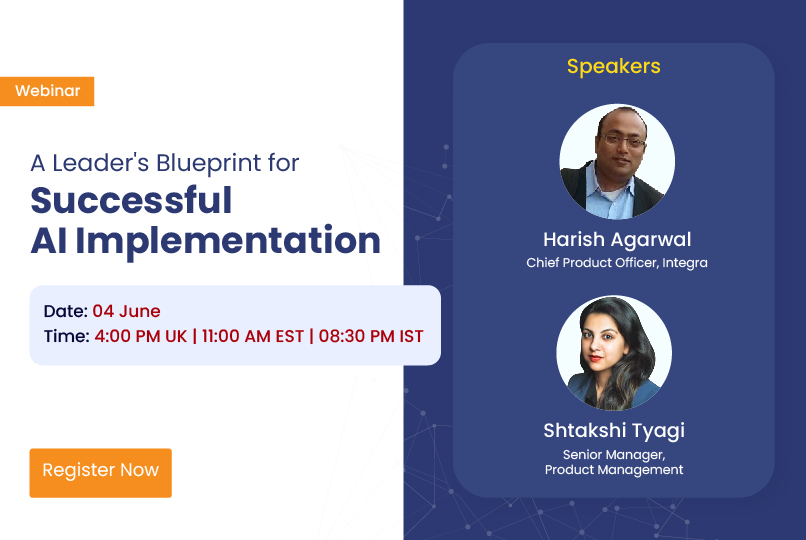Author: Nikhil. Mahamuni
Success Through Automation and Agentic Workflows for Competitive Edge
Understanding AI Agents and Automation
The concept of automated agentic workflows is gaining traction as businesses seek to enhance efficiency and productivity. At its core, this approach involves the use of artificial intelligence (AI) agents, which are software entities that perform tasks autonomously on behalf of users. These AI agents are capable of learning, adapting, and making decisions, thus streamlining business operations.
Automation, in this context, refers to the process of using technology to execute recurring tasks without human intervention. When combined, AI agents and automation can revolutionize workflows, providing a level of dynamism and intelligence that traditional systems lack.
Key components that make up an automated agentic workflow include:
- Decision-making capabilities: AI agents can analyze vast amounts of data to make informed decisions.
- Adaptability: These systems can adjust their actions based on new data and changing environments.
- Scalability: Agentic workflows can easily be scaled up or down to meet the demands of the business.
For a quick overview of how these components integrate, readers may find the article ‘The Integration of AI Agents in Enterprise Systems’ useful.
Benefits of Automated Agentic Workflows
The implementation of automated agentic workflows into business operations can yield a multitude of benefits. These benefits not only enhance the performance of individual tasks but also contribute to the overall strategic advancement of the organization.
| Benefit | Description |
| Increased Productivity | AI agents can handle tasks more quickly and accurately than humans. |
| Reduced Operational Costs | Automation reduces the need for manual labor, thus saving on costs. |
| Enhanced Accuracy | AI agents minimize the risk of human error in workflows. |
| Better Data Analysis | Automated systems can process and analyze data more efficiently. |
| Improved Customer Experience | Swift and personalized responses to customer inquiries are possible with AI. |
By leveraging AI agents, businesses can optimize their operations, leading to significant improvements in speed, cost-efficiency, and reliability. These advancements support companies in maintaining a competitive edge in the market.
Additionally, automated agentic workflows can provide deeper insights into operational efficiency through agentic workflow analysis, allowing businesses to continuously refine and enhance their processes. With the right implementation, these workflows have the potential to not only transform operations but also to redefine industries, paving the way for a future where AI agents are integral to business success.
Implementing Automated Agentic Workflows
The transition to automated agentic workflows marks a significant step in the evolution of business operations, leveraging AI agents to streamline tasks and decision-making processes. Implementation is a critical phase that determines how effectively these AI systems will function within the organization.
Integration with Existing Systems
Integrating automated agentic workflows with existing systems is a complex process that requires careful planning and execution. It involves mapping out current workflows, identifying potential integration points, and ensuring compatibility between new AI tools and legacy systems.
Key steps in this integration process include:
- Conducting an agentic workflow analysis to understand the current state of business processes and pinpoint areas that can benefit from automation.
- Establishing a robust integration framework that allows AI agents to seamlessly interact with existing databases, software, and applications.
- Ensuring that the data formats and communication protocols are standardized across the board to facilitate smooth data transfer and function.
The goal is to create a cohesive system where automated agentic workflows complement and enhance the efficiency of existing processes without causing disruption.
Training and Customization for Specific Business Needs
Each business has unique needs and challenges that require tailored solutions. Training and customizing AI agents to address specific business requirements is crucial for the success of automated agentic workflows.
Training involves:
- Feeding the AI agents with relevant data and use cases to educate them about the business’s specific operational context.
- Allowing the AI systems to learn from real interactions and adapt over time to optimize their performance in line with business goals.
Customization, on the other hand, includes:
- Configuring AI agents based on the insights gained from agentic workflow design to ensure they align with the company’s strategic objectives.
- Fine-tuning algorithms and user interfaces to cater to the preferences and expectations of the staff who will interact with the AI agents regularly.
By investing time in training and customization, businesses can ensure that their automated agentic workflows are not just functional but are also aligned with their operational ethos and provide a competitive edge.
As businesses continue to adopt automated agentic workflows, it’s essential to focus on integration and customization efforts to harness the full potential of AI-driven efficiencies. By doing so, companies can look forward to substantial improvements in productivity and decision-making, as outlined in our guide to integrating AI agents for enterprise applications.
These advancements underscore the importance of not just adopting new technologies but adapting them to fit the unique requirements of the organization for optimal results.
Challenges and Considerations
While the implementation of automated agentic workflows can drive efficiency and innovation, it is accompanied by several challenges and considerations. These need to be carefully navigated to ensure the successful integration of AI agents into business processes.
Data Privacy and Security Concerns
Data privacy and security are paramount when adopting automated agentic workflows. The integration of AI agents often requires access to sensitive and proprietary data.
Protecting this information from unauthorized access and breaches is a critical challenge for businesses. Organizations must establish robust data governance frameworks to manage the data lifecycle effectively. It involves setting clear policies for data access, encryption, and regular audits to ensure compliance with data protection regulations.
Additionally, businesses must stay abreast of the latest cybersecurity measures to safeguard their systems against evolving threats.
| Consideration | Action Item |
| Data Access Control | Implement strict access controls and authentication mechanisms |
| Data Encryption | Use strong encryption protocols for data at rest and in transit |
| Compliance | Regularly review and adhere to data protection laws and regulations |
| Cybersecurity | Employ advanced security solutions and conduct frequent security assessments |
By prioritizing data privacy and security, organizations can minimize risks and maintain trust with customers and stakeholders.
Ensuring Ethical Use of AI in Workflows
The ethical use of AI in automated agentic workflows is another significant concern. It encompasses the transparent and fair use of AI agents, addressing biases in algorithms, and ensuring that AI-driven decisions do not result in unfair or discriminatory outcomes.
To ensure ethical AI practices, businesses should adopt principles that include accountability, transparency, and fairness. AI systems should be designed to be explainable, with clear documentation of the decision-making processes. It is vital to regularly review and test AI agents to detect and mitigate any biases.
| Ethical Principle | Action Item |
| Accountability | Assign responsibility for AI decisions and establish oversight mechanisms |
| Transparency | Maintain clear documentation and explainability of AI processes |
| Fairness | Implement regular testing for biases and take corrective measures |
Adhering to ethical standards in AI deployment not only aligns with social responsibility but also enhances the reputation and credibility of the business.
Navigating the challenges and considerations associated with automated agentic workflows is crucial for businesses. By addressing these concerns head-on, leaders can leverage the benefits of AI agents while maintaining ethical standards and safeguarding sensitive information.
Future Trends in Agentic Workflows
As we continue to witness rapid advancements in artificial intelligence, the domain of agentic workflows is poised for significant evolution. The integration of AI agents into business operations is revolutionizing industries, as these technologies become more sophisticated and accessible.
Advancements in AI Technologies
The field of artificial intelligence is making leaps in developing more capable and efficient AI agents. These advancements include improvements in natural language processing (NLP), machine learning algorithms, and robotic process automation (RPA). In the near future, we can expect AI technologies to become even more adept at understanding context and executing complex tasks with greater autonomy.
One of the key areas of progress is the enhancement of AI’s predictive capabilities. This progress means that AI agents will be better equipped to anticipate needs and optimize workflows proactively. Additionally, the integration of AI agents with Internet of Things (IoT) devices expands the potential for more interconnected and intelligent systems.
Potential Impact on Business Operations
The incorporation of automated agentic workflows can significantly influence the way businesses operate. With the potential to streamline processes, reduce errors, and free up human resources for higher-level tasks, AI agents are becoming indispensable tools for companies seeking efficiency and competitiveness.
| Expected Impact | Percentage Increase in Efficiency (Approximate values; may differ based on use cases) |
| Process Optimization | 25% – 40% |
| Reduction in Manual Errors | 30% – 50% |
| Cost Savings | 20% – 30% |
These efficiencies are not only limited to operational tasks but also extend to strategic decision-making. AI agents can analyze vast amounts of data to uncover insights, enabling businesses to make informed decisions swiftly. This agility is essential in a rapidly changing market landscape.
The trajectory for agentic workflows is set towards more intelligent, autonomous, and interconnected systems. Businesses that adopt and refine these technologies stand to gain significant advantages in terms of efficiency, scalability, and innovation.
As AI continues to advance, it will be crucial for businesses to stay abreast of the latest trends and incorporate them into their operations through thoughtful agentic workflow analysis and design.


